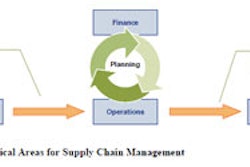
The results are in for The 2019 A.T. Kearney Foreign Direct Investment (FDI) Confidence Index®, and they reflect the profound uncertainty that supply chain executives confront as their companies place big—in some cases, existential—bets on the longer-range global economic outlook. And for good reason. In the face of a slowing global economy, structural impediments that cloud medium-term growth prospects, the rise of populism and nationalism, renewed geopolitical tension, mounting concerns about trade openness, technology disruption, and lack of policy and regulatory consistency, strategic planners certainly have their hands full.
One thing is for sure, however: in a world drifting toward higher levels of parochialism when it comes to national economic and trade policies, firms today have substantially greater agility than they have had in the past pertaining to managing core operations and global supply chains. In light of all the paradoxes currently at work, those companies will need all the agility they can get. The FDI Confidence Index results provide key insights for the agile management of this external volatility that apply to firms across diverse geographies and sectors.
Introducing the Index
The FDI Confidence Index, established in 1998, is a survey conducted each year of 500 global business executives of firms with annual revenues of more than $500 million. In contrast to data that track historical developments in FDI, the Index is forward-looking because it challenges respondents to rank markets that will attract the most FDI in the next three years. This year, the pool of respondents extends to 30 countries that by UNCTAD statistics make up more than 90 percent of the global flow of FDI. Over the years, the countries ranked have tracked closely with the top destinations for actual FDI flows in subsequent years. So, at the macro level, we believe, the Index is a relatively reliable predictor of where FDI flows go in the subsequent three-year period.
What, then, did the Index reveal last year? Three main conclusions stood out: The first was that the United States continued to represent the most attractive target for FDI flows. After displacing China in 2012, it was at the very top of the list for the sixth year running. Second, it was a big year for European economies, which staged a comeback to capture more than half of the top 25 spots after its share of positions on the Index had declined in the two previous years. Finally, it was clear that localization—the practice of shifting management, operations, production, and/or marketing to local markets—was top of mind. Ninety percent of business leaders indicated that they were pursuing or considering pursuing localization strategies.
We were curious to see whether this year’s results would mark a continuation or a break from last year. The 2019 FDICI survey was in the field in January 2019. Imagine the context—which was marked by transformations and volatility. Jair Messias Bolsonaro started his four-year term as president of Brazil. Nancy Pelosi regained her position as speaker in the House of Representatives after the 2018 mid-term elections enabled Democrats to regain control. The Yellow Vest protests in Paris were intensifying. Juan Guaidó and the National Assembly in Venezuela declared incumbent president Nicolás Maduro as illegitimate and attempted to remove him. Militants stormed a hotel in Nairobi, killing 21 people. The United States and China were just a third of the way through the “cease fire” of their protracted trade dispute marked by the impositions of tariffs by Washington and retaliatory measures by Beijing. The expansion of the global economy had weakened. According to the updated IMF World Economic Outlook, the global economy was projected to grow at 3.5 percent in 2019 and 3.6 percent in 2020, 0.2 and 0.1 percentage point below its projections three months earlier.
Continuities in the 2019 FDI Confidence Index …
This year’s Index contains both validations and paradoxes. On the validation side, the data this year reaffirm some of the conclusions that came through last year. Only one new economy—Singapore—was able to break into the top-10 frontrunners—at the expense of Switzerland, which fell to 13th. Hardly a reshuffling of the deck. The United States remains at the top of the list, while Germany displaces Canada for second place (in a near statistical dead heat). The United Kingdom, perhaps reflecting all the pressures of pre-Brexit positioning of investment, maintains its fourth position. And France enters the top-five for the first time since 2002.
There are some subtle but important shifts in the rankings, though. The first is that the margin between first and second place has declined from last year. This may reflect some erosion of confidence in the United States due to the uncertainties associated with the government’s economic policies and regulations. Another shift is the continued decline of China’s position; Beijing dropped two spots to seventh place this year. It remains, however, the highest ranked emerging market on the Index—having firmly held this position since 1999.
Another important reaffirmation from last year is the number of developed markets at the top of the list. Developed markets account for 22 of the 25 spots on the Index—hitting their highest-ever share, even outpacing last year’s record. European markets hold steady with 14 spots—once again claiming the title of the region in which investors are most confident about the likelihood of future investments. Furthermore, Europe includes all of the markets that marked the largest gains in rankings: Denmark (+6 places), Spain (+4), Austria (+3), and Belgium (+3). And Finland is a newcomer on the 2019 Index. Continued investor focus on European markets likely reflects ongoing uncertainty surrounding Brexit, as companies invest in other European Union (EU) member economies to maintain their preferential access to the EU market.
A third confirmation is that the Asian economies continue to flex their muscles when it comes to FDI attractiveness. The highest level goes to Japan, in 6th place. Generally speaking, though, Asia Pacific performs strongly, with 8 markets in the top 25 and 4 (Japan, China, Australia and Singapore) in the top 10.
… And Some Important Paradoxes
But while many of the results in this year’s Index did confirm our earlier results, there were also a number of conspicuous paradoxes that, we believe, reflect the profound uncertainty that supply chain executives and other business leaders must confront. In particular, five paradoxes stand out.
1) The big one is the decline of emerging markets. In fact, only three emerging markets (China, India and Mexico) rank among the top 25 economies for FDI in the next three years. Brazil, the only other emerging market in the 2018 Index, has fallen off the list. This represents the continuation of the steady decline in the number of emerging markets over recent years. The paradox is that there continues to be enthusiasm among investors for emerging and frontier markets. Some 43 percent tell us they are seeking new opportunities in emerging markets—slightly more than the 42 percent seeking new opportunities in frontier markets and the 41 percent doing so in developed markets. More strikingly, while there are increases in the average scores for almost all countries included in our Index, the average score for frontier markets increases the most (+0.15), followed by emerging markets (+0.12) and then developed markets (+0.09).
2) A related paradox illuminated by our Index is the attitude among investors for developed markets. As mentioned above, developed markets stole the show in the 2019 Index. But investors also tell us that they are significantly concerned about the prospect of political instability, economic downturn, or the emergence of a more restrictive environment to business in these same markets.
3) The third paradox is the gap between what investors say and what they do when it comes to FDI. This year, again, respondents indicated in no uncertain terms that they assigned a high priority to FDI and forecast increased flows. Almost four-fifths of investors said their companies would increase their level of FDI in the next three years. Bullish as the respondents may be, the reality is that FDI levels continue to fall. The most recent estimates from the United Nations Conference on Trade and Development (UNCTAD) show a 19 percent fall in global FDI flows in 2018. In fact, the aggregate level of FDI has been falling precipitously for the past three years.
4) Fourth is that in an era of more nationalist fervor and rhetoric, investors are not focused on the country level. In fact, almost 60 percent of investors tell us that they start their FDI assessments at the regional or city level. Investor focus on cities appears particularly strong. The majority of investors are paying more attention to cities as a driver of investment decisions now and almost two-thirds say that their companies are engaging more with city-level stakeholders than they did just two years ago.
5) Finally, business leaders—who in the past have been bullish about the outlook for the global economy—are having second thoughts. Our data this year show that while there is still some enthusiasm for the global economic trajectory, fewer respondents are expecting the significant recovery that many had been forecasting in past years.
Challenges to Global Operations and Supply Chains
How, then, should supply chain executives respond to these findings? Among the takeaways from our Index of relevance to global business operations decision-makers, a few deserve special mention:
Prepare for what probably will be a gradual decline in world economic growth. This is reflected not only in the lower optimism among investors in our survey, but also in the continued downgrades that the IMF, World Bank Group, and OECD have all made in their projections.
Extended, global supply chains—already complicated—could become even more difficult to manage with political, economic and social volatility. Executives would be well advised to take a good, long look at existing supply chains with a view to simplifying the framework and reinforcing their positions at every stage of the value chain. Companies should become what we call “locally integrated enterprises,” which involves executives being continuously aware of local conditions and how they are shifting, recognizing the company’s role in shaping and reacting to those conditions, and using that knowledge to develop tailored business insights and strategies.
Prioritize cities, which are increasingly important in FDI decisions. While country-level politics are characterized by populism and nationalism, more globally-minded cities are rising in importance in terms of both economic prowess and political leadership. The numbers of our Index show how much investors assign a priority to how well cities function.
Is the FDI winter coming? No. The signs suggest that the FDI environment will continue to be characterized by incremental change. The reaffirmations of our results year-to-year certainly support the notion. But business leaders up to the task will need to monitor developments closely, exercise foresight when possible, and show significant agility when rapid responses are needed to address complicated challenges.


















